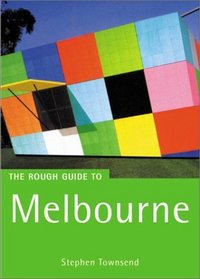Search -
The Rough Guide to Melbourne
The Rough Guide to Melbourne
Author:
INTRODUCTION Australia’s second-largest city and capital of the state of Victoria, Melbourne prides itself on being a place that knows how to live well. Although it lags behind Sydney in terms of population, prestige and sheer kinetic energy, its less brazen charms offer a quality of life which other Australian cities find difficult to mat... more »
Author:
INTRODUCTION Australia’s second-largest city and capital of the state of Victoria, Melbourne prides itself on being a place that knows how to live well. Although it lags behind Sydney in terms of population, prestige and sheer kinetic energy, its less brazen charms offer a quality of life which other Australian cities find difficult to mat... more »
ISBN-13: 9781858287430
ISBN-10: 185828743X
Publication Date: 1/1/2002
Pages: 317
Rating: ?
ISBN-10: 185828743X
Publication Date: 1/1/2002
Pages: 317
Rating: ?
0 stars, based on 0 rating
Genres:




